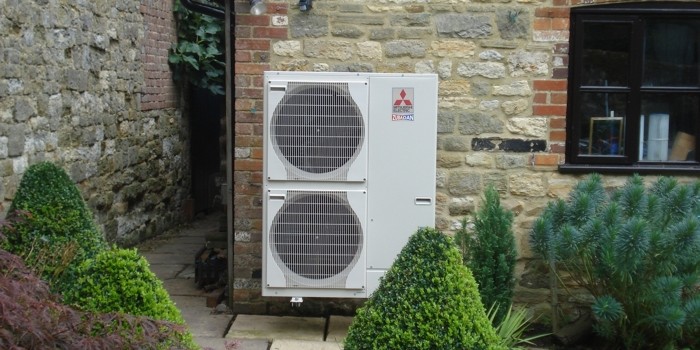
While the government took the decision to cut FIT payments drastically as a means of cost saving, when it comes to the Renewable Heat Incentive, it appears they are very keen to expand it. DECC announced earlier this month that they are looking to increase funding from £430 million in 2015/16 to £1.15 billion in 2020/21, an increase of over two and a half times.
As keen as this increased spending seems, the government are looking to get more bang for their buck. Therefore, they are proposing various changes to the RHI that we discuss in a bit more detail below. If you want to read all 89 pages of the government’s report, you can download it by clicking here.
The DECC wants to make this RHI scheme more accessible for families that are less able to pay. Renewable heating technologies are expensive to install and as such, these technologies are out of reach to many households. The government hopes that the changes to the scheme will make these technologies more accessible.
Long live the RHI – but changes are imminent!
The proposed changes are taking place in two stages – the first will be introduced in just a couple of days – on 1st April 2016. The second set of stages will be implemented sometime in 2017.
Under the RHI, spending is controlled by degression. Degression operates by applying an automatic tariff reduction once the budget (for a technology and/or the whole scheme) has reached pre-determined trigger points. This mechanism is not changing, however the digression assessments and potential reductions in tariffs have been announced right up until 2017.
There is a proposal to bring in a budget mechanism, which serves as a backstop to the degression mechanism, whereby the RHI scheme would close to new entrants if a certain level of spend was reached in a particular quarter. This was introduced for the Feed-in Tariff so it makes sense that the government would be keen to roll this out for the RHI scheme too, to protect itself and prevent massive overspends.
The government is also keen to change the way the RHI is linked to inflation. Previously the scheme has been been linked to RPI, however from 1st April 2016 the RHI will now be linked to the Consumer Prices Index (CPI). This will only be for new entrants – existing participants in the scheme who have signed up prior to 1st April 2016 will still be paid the RHI linked to RPI.
Under the existing legislation, renewable heating systems installed in second homes under the Domestic RHI have to be metered. This is to ensure value for money for the taxpayer, as the deeming methodology used to calculate payments for the majority of properties would result in overpaying homes that are not occupied all the time. Ofgem determines whether a property is a second home by asking whether it was occupied for at least 183 days in the 12 months before application. However, previously this has unintentionally captured self-builders who have only recently moved into their homes. This means they are either required to install a meter at additional cost, or wait six months to apply for the Domestic RHI – in the new proposed changes to the scheme, the application process for self-builders has been changed to prevent this issue from occurring.
Heat demand for different renewable techs will now be limited
Under current RHI legislation, there is no limit to the heat demand that is eligible for the RHI payments. This means that for bigger properties, the RHI payments could be far higher than the cost of installing the renewable heating technology. This is particularly true with biomass boilers, with some households making over £10,000 per year from their renewable heating system, resulting in a payback of just 2-3 years. Under the proposed changes, DECC are recommending that heat demand limits are introduced – and the limits would be as follows:
- Biomass: 25,000 kWh
- Ground Source Heat Pump: 25,000 kWh
- Air Source Heat Pump: 20,000 kWh
By putting these limits in place, the financial return from the RHI is capped. This means that regardless of the size of your property, once you reach the limit, your quarterly RHI payments will be capped. Bigger properties tend to have higher heat demands, but insulation and age of heating system also have a big impact.
Helping encourage those in energy poverty to install renewable heating systems
To help encourage the take-up of renewable heating technologies for those lacking the initial capital to cover the install costs, the government is proposing allowing householders to assign their right to RHI payments to a company that has financed their renewable heating technology. Householders would still own the system. The government is also proposing third party ownership as a possibility, where a company that has financed the renewable heating system would be able to apply for the RHI payments. Both of these mechanisms would help open up these technologies for those lacking the initial capital.
The end for solar thermal? RHI support withdrawn from 2017
Perhaps the biggest reform the government is looking to implement is removing RHI support for solar thermal. This would start in 2017, but would effectively kill demand for this technology. This seems an interesting decision considering that the government is looking to increase RHI budgets over the next 5-6 years.
If you have any thoughts on the RHI, or have any questions, please get in touch below and we will come back to you as soon as we can!
Think we missed something? Do you have a different opinion?
Comment below to get your voice heard…












Is AD plants RHI being capped
Hi Graham – not that we have heard. I think it is mainly the more mainstream techs where people are beginning to take advantage (i.e. invest 200k and get £1m plus back over the 7 years!) we are hearing more and more cases of this.
Just from reading about these changes, not clear why or how they are increasing the funding so dramatically- there must be more to the changes ?
Hi Tim, I genuinely don’t think there is anything strange going on here. The Government are keen to be seen to be helping those in energy poverty, so they are opening up the scheme to allow third parties to offer the initial funding and then take the RHi payments. I think this is why they are increasing the funding – because the scheme will be used by more and more people.
We have neither mains gas nor oil at our new property At BT61 7EF- only electric with an economy & system that simply does not work ! We want to evaluate a heat pump from with ground or air -but finding the expertise to give us a quote seems impossible to find.
We also want to put in double glazing but the local planning regs for a listed building specifically forbid this!
Hi Ivan, have you considered secondary glazing? Many companies out there that offer fantastic solutions to meet the requirements of a listed building. However, with regards to heat-pumps – this only becomes viable if you can bring the u-value down sufficiently of your applications (walls, roof and windows). If you cannot insulate due to planning restrictions there may seem very little point in a heat-pump. A quality biomass boiler may be the only feasible option.
Not only do we have 16 Solar Panels which provide electricity and hot water we also have air source heat pumps. We receive FIT payments but on the lower rate. Recently put our home on the market and honestly thought the very low bills coupled with the FIT payments would encourage offers. Not a bit of it so far the people who have viewed do not show any interest at all and when the savings are mentioned they change the subject.
Cannot understand government thinking. They are happy to subsidise nuclear heavily through the back door with all associated costs and safety issues which all ultimately fall back to the taxpayer but for far less money seem to keep making true, green, renewable energy far less attractive. Complete madness to me when renewable energy costs are falling and nuclear increasing. Heavy Taxation on rooftop solar (restrospectively) for those who arent exporting seems unfair and a slap in the face for those who were trying to do the right and were encouraged by the government to do this
Hello there,
We have just inherited a home in Dorset which we are going to rent out for a few years before living there ourselves. Currently it is heated by an old oil boiler which needs replacing. The house is not connected to mains gas. I would like to explore renewable energy sources rather than install a newer, more efficient oil boiler, which would cost about £6K. Any advice would be appreciated. We wouldn’t be able to afford a huge up-front cost, however.
Thanks,
Susie